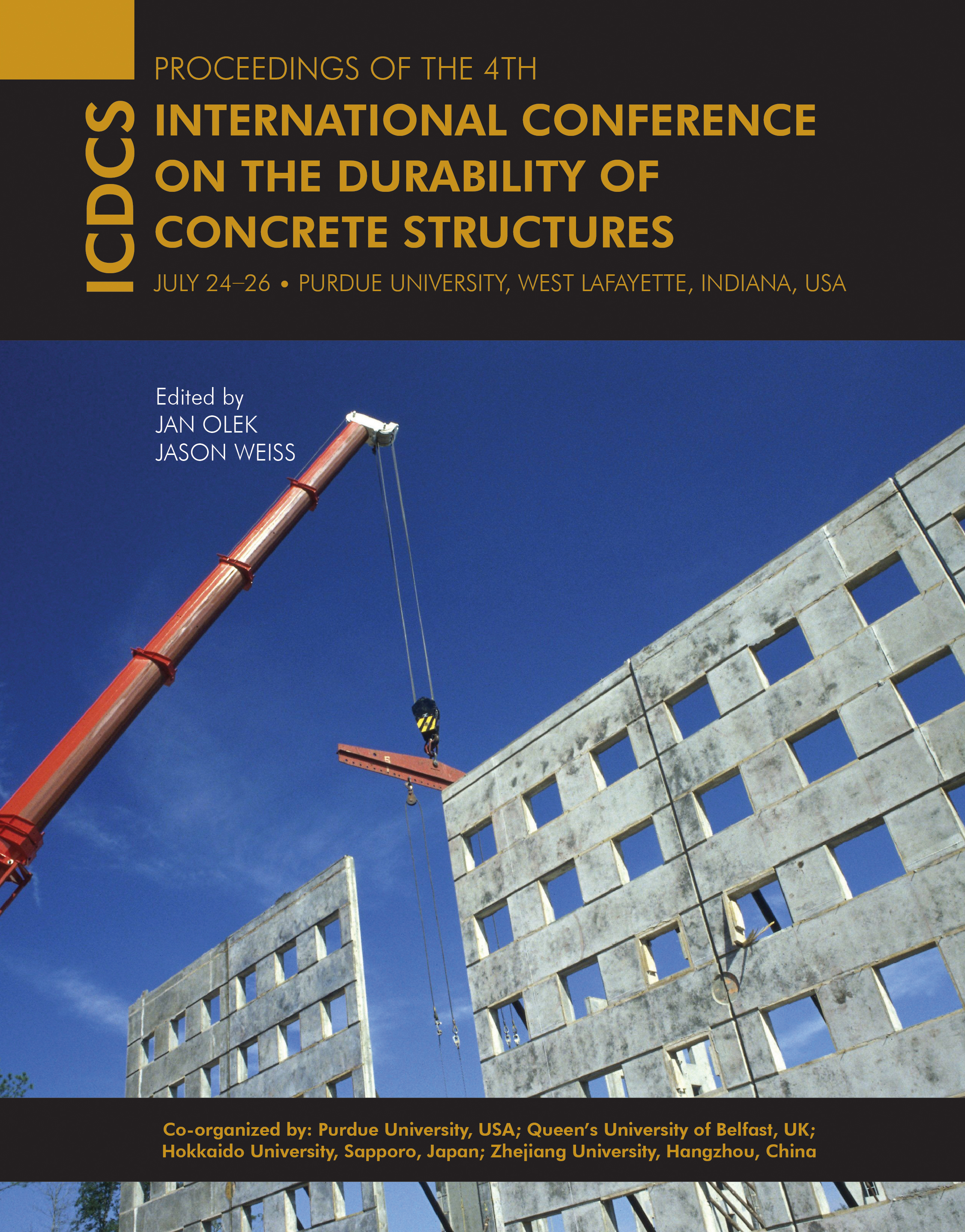Keywords
probabilistic, corrosion rate, prestressing steel, service life, corrosion propagation period, time to cracking, prestressed concrete
Abstract
The overall service life of concrete structures can be divided into corrosion initiation and corrosion propagation phases. The durations of these two phases depend on the chloride threshold (Clth) and corrosion rate (icorr), respectively, of the embedded steel reinforcement. Quantitative information on Clth and icorr of conventional steel reinforcement are available in literature. Now‑a‑days, the use of prestressed concrete elements are rapidly increasing and there is a dire need for estimating their service life. Quantitative information on the Clth and icorr of prestressing steel are required for this estimation. However, very limited quantitative information is available on these parameters. As such, the current practice is to assume that both conventional and prestressing steels have similar Clth and icorr – which might result in unrealistic estimations.
This paper provides data on icorr obtained from a 9-month long experimental program. The icorr data was obtained using linear polarization resistance (LPR) tests on prestressing wire embedded in mortar. 10 specimens (made using the center king-wires obtained from 7-wire strands) were cast, cured, and subjected to a cyclic wet-dry exposure using 3.5 % sodium chloride solution. It is observed that the average value of icorr of prestressing steel exposed to chloride‑contaminated mortar is around 5.8 mA/cm2. The paper also provides the probabilistic estimations on corrosion propagation period, tp (defined as the time to crack after corrosion initiation) by substituting the measured icorr data into two models from literature [i.e., Morinaga (1990) and Wang and Zhao (1993)]. It is found that the estimated average tp for prestressed concrete systems are 5.4 and 9.7 years with large scatter. This paper also provides probabilistic estimations on tp for the prestressed concrete systems with 50, 65, and 80 mm cover depths.
DOI
10.5703/1288284315474
Included in
Probabilistic Estimation of Corrosion Propagation Period for Prestressed Concrete Structures Exposed to Chlorides
The overall service life of concrete structures can be divided into corrosion initiation and corrosion propagation phases. The durations of these two phases depend on the chloride threshold (Clth) and corrosion rate (icorr), respectively, of the embedded steel reinforcement. Quantitative information on Clth and icorr of conventional steel reinforcement are available in literature. Now‑a‑days, the use of prestressed concrete elements are rapidly increasing and there is a dire need for estimating their service life. Quantitative information on the Clth and icorr of prestressing steel are required for this estimation. However, very limited quantitative information is available on these parameters. As such, the current practice is to assume that both conventional and prestressing steels have similar Clth and icorr – which might result in unrealistic estimations.
This paper provides data on icorr obtained from a 9-month long experimental program. The icorr data was obtained using linear polarization resistance (LPR) tests on prestressing wire embedded in mortar. 10 specimens (made using the center king-wires obtained from 7-wire strands) were cast, cured, and subjected to a cyclic wet-dry exposure using 3.5 % sodium chloride solution. It is observed that the average value of icorr of prestressing steel exposed to chloride‑contaminated mortar is around 5.8 mA/cm2. The paper also provides the probabilistic estimations on corrosion propagation period, tp (defined as the time to crack after corrosion initiation) by substituting the measured icorr data into two models from literature [i.e., Morinaga (1990) and Wang and Zhao (1993)]. It is found that the estimated average tp for prestressed concrete systems are 5.4 and 9.7 years with large scatter. This paper also provides probabilistic estimations on tp for the prestressed concrete systems with 50, 65, and 80 mm cover depths.





